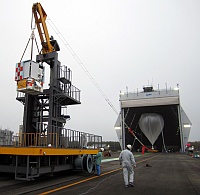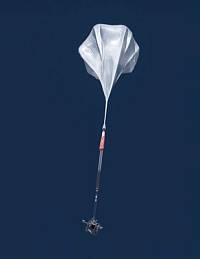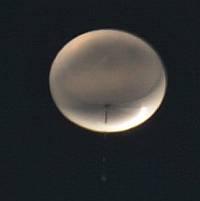News Archive
Articles of the month
-
May 28 2017
JAXA announced first balloon launch campaign for 2017

Taiki, Hokkaido, Japan.- A few days ago in their Japanese page, the Institute of Space and Astronautical Science -founded by the Japan Aerospace Exploration Agency (JAXA) in 2003- announced the realization of the first series of stratospheric balloon launches for 2017.
The campaign will be performed at the Taiki Aerospace Research Field, the dedicated launch facility that the agency have in Hokkaido Island in northern Japan, near the town of Taiki-Cho. According to the brief press release, four missions will be carried out -as long as the weather cooperates- starting on June 5th...
-
May 19 2017
NASA's Super Pressure Balloon has sunk in the Pacific Ocean

In this entry I will discuss some facts around the failure of NASA's Super Pressure Balloon, launched as mission 679NT from Wanaka, New Zealand on April 24, 2017, transporting onboard an instrument known as EUSO-SPB (Extreme Universe Space Observatory) with the goal of detect ultra high energy cosmic rays.
It's been more than a week since the loss of the balloon in the Pacific Ocean and I've expected to have by now enough elements to make a more detailed account of what happened. The reality is that the long silence from NASA that accompanied the development of the mission after launch, has extended this time. Thus, I'm being forced to make a more subjective post than I would like with the little amount of information available. Anyway, I think several interesting elements are worth of analysis....
-
May 2 2017
Super pressure balloon launched by NASA from Wanaka

Wanaka, New Zealand.- The third NASA's long duration mission in the southern hemisphere was succesfully started on April 24 when a team from the Columbia Scientific Balloon Facility performed a flawless launch of the new superpressure balloon that the agency is being developing for scientific use. The launch was carried out from the Wanaka Airport, in Otago, New Zealand, after seven previous unsuccesful attempts.
Althought the first 36 hrs of flight were carried out without problem, during the second night aloft, a steady decrease of altitude was evident. Taking account that the issue repeated every night, and after the launch NASA remained mostly silent about the mission, this could be an indication that the things are not going as expected...


